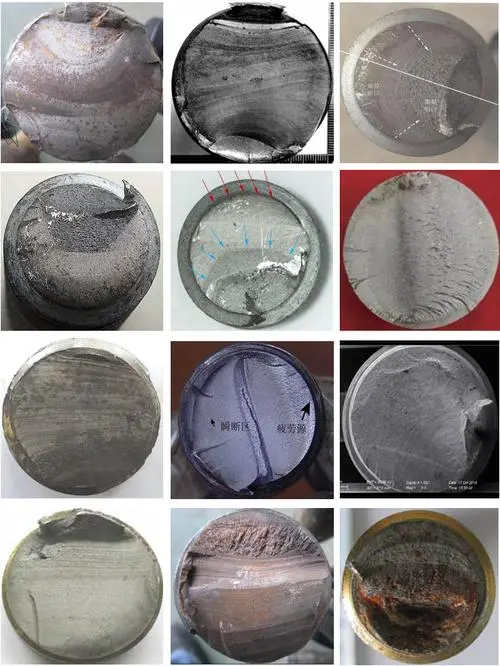
Knowledge
Metal Fatigue and Solution

In the field of mechanical engineering, metal fatigue is like a "chronic disease" in the material world - parts gradually develop cracks under repeated stress and eventually break suddenly. This kind of failure often occurs when the material seems intact, so improving fatigue strength is crucial for ensuring engineering safety.
Recently, a research team led by Professor Zhefeng Zhang from the Institute of Metal Research, Chinese Academy of Sciences, in collaboration with the team of Academician Dianzhong Li, has made a major breakthrough in optimizing the anti-fatigue performance of bearing steel, opening up new avenues for solving this century-old problem. The results were published in Acta Materialia and JMST, establishing a systematic theoretical framework of "inclusion control - strength and toughness matching - interface optimization", and opening up new paths for the development of high-end bearing materials in aerospace, rail transportation and other fields.
So, what problems has this research solved? Let's take a look together.
01
Stress Traps
In response to the long-standing issue that the fatigue strength of high-strength steel has been limited by stress concentration at inclusions, the team systematically revealed the mechanism by which inclusions affect fatigue life and found that the fatigue damage coefficient of Al₂O₃ is 30% higher than that of TiN, providing a theoretical basis for precise control of nitrogen and oxygen during the smelting process.
Inclusions in metallic materials act like "microscopic stress amplifiers". The research team found that for the same size, the stress concentration effect of Al₂O₃ inclusions (alumina) is 30% higher than that of TiN (titanium nitride). This is equivalent to embedding micro-blades of different "sharpness" within the material. This explains why the content of nitrogen and oxygen elements in steel needs to be precisely controlled: reducing the formation of inclusions is equivalent to blunting the "invisible blades" within the material.
02
Establishing a "Fatigue Safety Alert Line"
The team innovatively proposed the "Critical Inclusion Size Criterion for Fatigue Cracking", establishing a quantitative relationship between tensile strength, fracture toughness and inclusion size, achieving a coordinated optimization of strength and toughness. Through rare earth modification technology, the inclusion size was significantly reduced and the interface deformation capacity was enhanced. Combined with heat treatment optimization, the tensile-tensile and tensile-compressive fatigue strengths of GCr15 bearing steel were successfully increased to 1600 MPa and 1103 MPa respectively. 1600 MPa is approximately equivalent to the pressure exerted by water at a depth of 160,000 meters on a one-square-meter area; 1103 MPa is equivalent to the pressure at the base of Mount Everest. These two achievements represent a 4% and 10% increase respectively over the existing world records for fatigue strength, marking a leap in fatigue performance.
This is like the seismic design of buildings: it requires both the strength of steel bars and the toughness of concrete, and the two need to be precisely balanced.
03
The "interface revolution" modified by rare earth elements
Three breakthroughs have been achieved by adding rare earth elements:
1. Inclusion slimming: The average size is reduced by approximately 40%.
2. Interface softening: A deformable interface layer (similar to a rubber gasket) is formed.
3. Stress buffering: Local stress concentration is reduced by about 25%.
This is equivalent to giving each tiny defect a "buffer protective suit".
It is reported that this breakthrough not only rewrites the fatigue strength limit of high-strength steel, but also establishes a systematic methodology of "defect control - interface design - performance optimization", providing a material foundation for the independent development of key components such as high-speed rail bearings and aviation engines. In the future, this "material gene editing" technology is expected to be extended to more alloy systems, promoting China's high-end equipment manufacturing into an "ultra-long standby" era.
Vigor has more than 20 years of experience and a professional team in producing castings, forgings, and CNC machined parts. We know point improve metal parts' performance on different materials and different structural metal parts. If you have any questions or any parts need to be developed, please feel free to contact us at info@castings-forging.com



